BACK IN ONE PIECE —
Starliner makes a safe landing—now NASA faces some big decisions
Contract says a docking demonstration is needed. Will NASA waive this requirement?
ERIC BERGER - 12/22/2019, arstechnica.com
New Mexico, Sunday, Dec. 22, 2019.
NASA/Bill Ingalls
The main parachutes begin to deploy as the Boeing CST-100 Starliner spacecraft lands.
NASA/Bill Ingalls
The Boeing CST-100 Starliner spacecraft jettisons the heat shield before it lands.
NASA/Aubrey Gemignani
The Boeing CST-100 Starliner spacecraft is seen landing in this 30 sec. exposure.
NASA/Aubrey Gemignani
Starliner touches down.
NASA/Aubrey Gemignani
Boeing, NASA, and U.S. Army personnel work around the Boeing
CST-100 Starliner spacecraft shortly after it landed.
NASA/Bill Ingalls
Boeing, NASA, and U.S. Army personnel collect parachutes.
NASA/Bill Ingalls
Boeing, NASA, and U.S. Army personnel work around the
Boeing CST-100 Starliner.
NASA/Bill Ingalls
A protective tent is placed over the vehicle.
NASA/Bill Ingalls
Boeing’s Starliner spacecraft safely returned from orbit on Sunday morning, landing at White Sands Space Harbor in New Mexico before sunrise. The capsule very nearly hit its bullseye, and initial reports from astronauts on the scene say the vehicle came through in "pristine" condition.
The company will now spend several days preparing Starliner for transit, before shipping it from New Mexico back to Boeing's processing facility at Kennedy Space Center in Florida. Then, engineers will spend most of January reviewing data captured by on-board sensors. What happens after that is the big question.
Mission Elapsed Time anomaly
After the spacecraft launched on board its Atlas V rocket, but before it separated from the booster, the capsule needed to figure out what time it was. According to Jim Chilton, Boeing's senior vice president of the Space and Launch division, the way this is done is by "reaching down into" the rocket and pulling timing data out. However, during this process, the spacecraft grabbed the wrong coefficient. "We started the clock at the wrong time," Chilton said. "The spacecraft thought she was later in the mission and started to behave that way."
The net effect of this is that Starliner's service module thrusters began consuming a lot of propellant to keep the vehicle in a very precise attitude with respect to the ground. When flight controllers realized the error, it took time to establish a communications link because the spacecraft was not where they thought it was.
With the on-board propellant remaining, Starliner did not have sufficient reserves to approach the International Space Station and perform a rendezvous and docking with the orbiting laboratory—a key objective of this flight test before NASA allows its astronauts to fly on the capsule into space.
Much of the rest of the flight went very well, however, once flight controllers diagnosed and corrected the mission elapsed time error. (The clock was off by 11 hours.) The vehicle flew smoothly in orbit, its life support systems kept the spacecraft at good temperatures, and it made a safe and controlled landing on Sunday morning. Chilton said he believes the vehicle will meet 85 to 90 percent of the test flight's objectives.
Good enough?
The question is whether this will be good enough for NASA to proceed with a human test flight of Starliner without a second uncrewed test to determine the capsule's capability to dock to the space station. Part of that decision will depend on the root cause of the problem, and whether it represents a systemic error in Starliner's flight software.
"Make no mistake, this did not go according to plan in every way that we hoped," NASA Administrator Jim Bridenstine said Sunday. Even so, Bridenstine said he fully expects NASA to work with Boeing to get humans flying on Starliner in 2020. Of the software timing error, he said, “It’s not something that is going to prevent us from moving forward quickly.”
However, NASA's "commercial crew" contract with Boeing stipulates several requirements that must be completed by the orbital flight test. "The Contractor’s flight test program shall include an uncrewed orbital flight test to the ISS," the document states. And this test should include, "Automated rendezvous and proximity operations, and docking with the ISS, assuming ISS approval."
After a news briefing on Sunday morning at Johnson Space Center, the deputy director of the commercial crew program, Steve Stich, said NASA will review the contract. "We’ll have to look at that afterwards and try to understand it," he said. "We’ll have to go take a look at what we achieved with what’s in the contract."
Boeing—which presumably would have to pay for a second test flight as part of its fixed-price contract with NASA—certainly would like to be able to convince NASA that it does not need to make a second uncrewed test flight. On the day Starliner landed, it sure sounded like some key NASA officials would like to talk themselves into that as well.
Listing image by NASA/Bill Ingalls
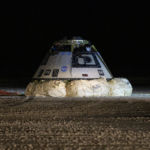
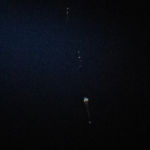
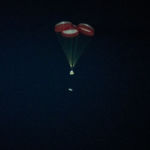
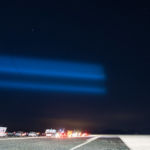
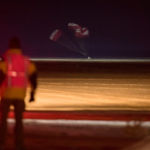
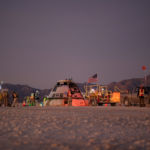

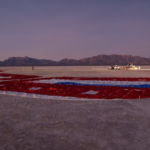
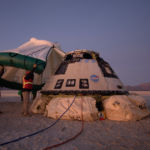
No comments:
Post a Comment